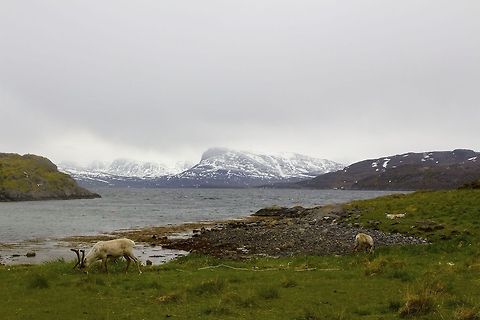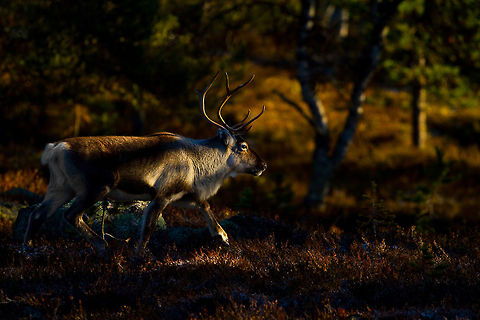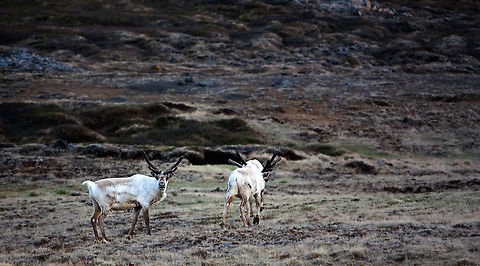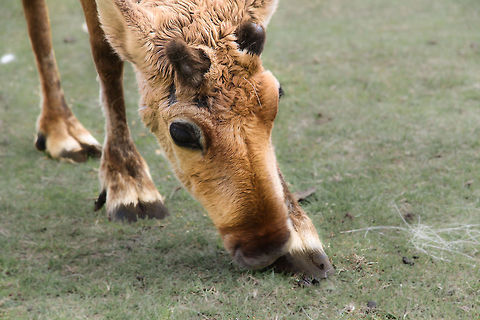
Distribution
Originally, caribou range spanned the northern conterminous USA from Washington to Maine. In the 19th century, it was apparently still present in southern Idaho. During the late Pleistocene era, reindeer were found as far south as Nevada and Tennessee in North America.According to the Grubb, "Rangifer tarandus" is "circumboreal in the tundra and taiga" from "Alaska and Canada including most Arctic islands, and USA.

Habitat
Originally, caribou range spanned the northern conterminous USA from Washington to Maine. In the 19th century, it was apparently still present in southern Idaho. During the late Pleistocene era, reindeer were found as far south as Nevada and Tennessee in North America.According to the Grubb, "Rangifer tarandus" is "circumboreal in the tundra and taiga" from "Alaska and Canada including most Arctic islands, and USA.

Food
"Rangifer tarandus" are ruminants, having a four-chambered stomach. They mainly eat lichens in winter, especially reindeer moss—the "only large mammal able to metabolize lichen owing to specialized bacteria and protozoa in their gut." Each ecotype eats a diet based on the surrounding ecology. Mountain caribou eat lichen from trees, for example. They have been known to eat their own fallen antlers, probably for calcium. They also eat the leaves of willows and birches, as well as sedges and grasses.
Predators
Predation by wolves, bears, coyotes, cougar, and lynx and over-hunting by people in some areas, contribute to the decline of the populations of woodland caribou. Healthy caribou are faster than their predators including wolves. Wolverines—who are themselves a threatened species in some parts of Canada— can kill adult caribou. Bears prey on caribou but are most likely to attack weaker animals, such as calves and sick deer. As carrion, caribou are fed on opportunistically by foxes, ravens and hawks.References:
Some text fragments are auto parsed from Wikipedia.